#dougal dixon
Text

#tumblr memes#meme#memes#humor#humour#man after man#dougal dixon#speculative biology#speculative evolution#speculative zoology#art meme#art humor#specevo#spec evo#specbio#spec bio#spec zoo#best memes#memesdaily#dank memes#dank humor#dankest memes#shitpost#meme humor#funny shit#funny stuff#funny#funny post#funny memes#christmas memes
77 notes
·
View notes
Text
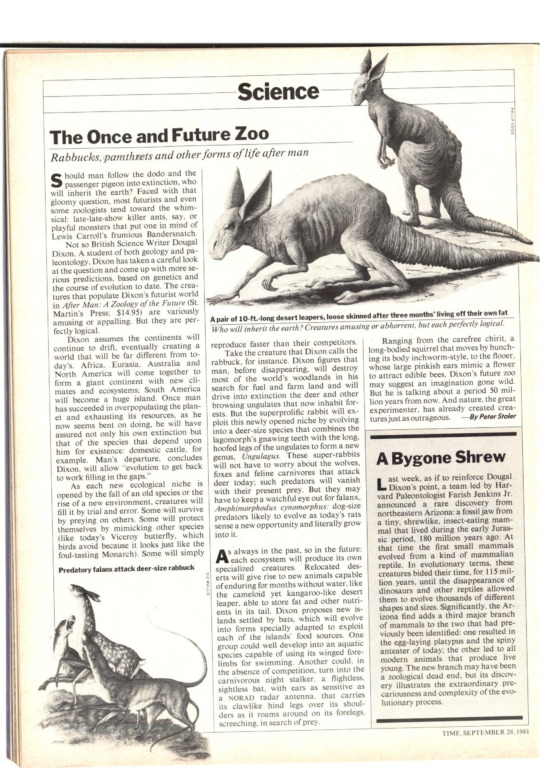
Article about After Man in the September 28, 1981 issue of TIME Magazine.
52 notes
·
View notes
Text
Dougal Dixon's art is a blessing.
Season's greasons everyone!

#happy holidays#seasons greasons#merry chrysler#merry crimbus#dougal dixon#man after man#merry Christmas#Alt text would be seasons beatings lol
294 notes
·
View notes
Photo

This is a sort of blast from the past a bunch of my earliest drawings were reimagining of creatures from author Dougal Dixon's speculative biology books, in particular Man After Man which sparked my interest in the concept of posthumans. As much as I've enjoyed drawing them I've moved away from them to try to create my own ideas. That said is was nice to draw them again to see how my skills have improved since I started. Anyway, here's a brief rundown of the species shown here (they include labels I made for them).
Woodland Dwellers (Orks of the west): fierce hunters who's lack of specialization allows them to adapt to most environments. They're also resistant to most natural poisons/toxins.
Aqatics (Merfolk of the oceans): skilled fishers who can breath in and out of water. They've developed a tradition where they mark unique traits and significant life events with ritualistic scaring.
Forest Dwellers (Dwarfs of the south): colorful and arboreal, they are remarkably strong for their size to move swiftly through the trees. Over generations, they've manipulated the growth of vines to create living pathways throughout the forests for themselves.
Tundra Dwellers (Giants of the north): towering nomads who lead quiet lives traveling across the Arctic circle. Their great strength enables them to hunt exceptionally large prey who's blood they adorn their faces with after each successful hunt.
Plains Dwellers (Elves of the east): Swift and long lived, they transverse the grasslands on long powerful legs while dark skin, large ears, and hair running down their backs allow them to tolerate intense heat. Initially herbivores, given bladed hands, replaceable teeth, and larger stomachs for eating grasses, they have since incorporated meat into their diet. Coupled with a longer lifespan, they became the first posthumans to redevelop culture.
If I was to do anything with these guys (and gain the rights to them somehow), it would probably be a survival game similar to Ancestors: a human odyssey where you go through their evolution into sapience.
Man After Man belongs to Dougal Dixon.
As always, comments and critiques are welcome.
#posthuman#posthumanism#creature design#Character Design#speculative#speculative biology#speculative evolution#human evolution#human#ork#merfolk#dwarf#giant#elf#dougal dixon#man after man#my art#digital art#digital color#Digital Illustration#spear#woodland#rainforest#tundra#ocean#plains#grasslands#Forest#future evolution
45 notes
·
View notes
Text
Spy's Spec-Bio Essentials
I honestly didn't mean to write a full-on essay, but I couldn't help myself -I love specbio, and the recent revival of interest in it makes me very happy. If you wanna just get right to the meat: normal links are highlighted blue, YouTube links are highlighted red.
Speculative biology has its roots as far back as Pliny the Elder and his Natural History, though most consider H.G. Wells to be the true grandfather of the genre with works such as War of the Worlds, The Time Machine, and Man of the Year Million. However, any speculative biologist worth their salt credits Dougal Dixon as the father of specbio as we know it today –especially since he is the man who coined the term! Dixon's books After Man, Man After Man, and The New Dinosaurs are considered the foundational works of modern specbio. So too is Wayne Barlowe's book Expedition.
While the original printings of these books are very expensive to acquire, After Man recently received a Kindle version, and Expedition has a very good documentary adaptation available in totality on YouTube. Another important work of early speculative biology was the Discovery Channel limited series The Future Is Wild, a documentary show exploring the possible futures of life on Earth in several million years' time.
With the rise of the internet, people interested in speculative biology –those few and far between– could share their thoughts and amateur works with each other. Online specbio hit its first height around the mid-aughts to early tens, featuring many notable works that were very influential to me personally when I joined the scene circa 2014. Unfortunately, right around when I joined there was a notable "mass extinction" –many of the more active and prominent figures of the specbio community left the web behind for various reasons, and thus the golden age ended.
In recent years, partially thanks to certain YouTube video essays on the classic projects, interest in speculative biology seems to have increased dramatically! I've taken to calling the current era the "specbio renaissance," and it makes me so happy to see new, younger people interested in this unique facet of creativity. In light of this I've created this master post of my personal recommendations of essential specbio works for new "speccers" to enjoy!
The specbio community has congregated on forums for decades. I personally joined the community via DeviantArt right around when the old ZetaBoards forum underwent a massive host shift and never participated on the forum all that much, but fortunately the old Speculative Evolution Forum is still up and still active!
For those who'd prefer a simpler way to keep up with current events in the specbio community, Astrovitae is a free e-magazine dedicated to contemporary spec. A product of the recent specbio renaissance, Astrovitae only has a handful of issues thus far but is already becoming a staple publication in the field.
I made this post to provide what I think is key information and important resources, but the SpecBio Wiki is a far more thorough companion to your journey into the world of speculative biology. As always, though: beware ye old Wiki Rabbit Hole!
Biblaridion's Alien Biospheres video series is an excellent entry point for anyone looking to learn the basics of specbio. It's a demo xenobiology project, with a heavy focus on the scientific concepts used in building up the world and its ecology.
Curious Archive's Alien Worlds video series is an excellent collection of bite-size examinations of various specbio projects, including several on this list!
Nemo Ramjet (C. M. Kösemen)'s Life on Snaiad is universally considered a classic work of speculative biology, started in the early days of the golden age of internet specbio. Snaiad is an alien planet, in its early days of human habitation, filled with strange lifeforms bearing two "heads."
Kösemen's other well-known classic work is Alltomorrows, a short ebook exploring hundreds of millions of years' worth of possible human evolution. Readers, be advised: this work contains extensive body horror and discussion of human extinction, both circumstantial and deliberate.
Sagan IV, originally created by Hydromancerx, is one of the oldest and most extensive specbio projects. Started as a simple artistic exercise on a forum in 2006, Sagan IV has evolved into a large, highly collaborative vision of an alien world inspired by the works of Carl Sagan. It is still ongoing today, and you can participate in their regular contests and activities!
Gert van Dijk's Furaha is another of the well-known classic specbio projects, and one of the few from the golden age that is still fully active. Furaha itself is an alien world orbiting Nu Phoenicis which harbors a fascinating native biosphere, built upon carefully-researched biomechanics. The site itself is laid out much like an encyclopedia, and the accompanying blog is a treasure trove of specbio know-how and community history!
Sunrise on Ilion, a xenobiology project by @supermalmoworld, is a personal favorite of mine. Ilion is a planet tidally locked to a red dwarf star, and its endemic lifeforms often challenge our expectations for Earth-like ecology. The website boasts extremely detailed information on the setting and its inhabitants, as well as in-universe articles and logs of the various human expeditions to this fascinating world. The project is still active on a very sporadic basis, at least as per blog entries.
Nereus is a xenobiology project created by Evan Black; another reasonably well-known golden age work but one that is unfortunately no longer active. The world of Nereus, orbiting the star Achird, teems with life unfamiliar to the humans which seek to adopt it as their home. Like many specbio projects it adopts a documentarian style, but there are plenty of nuggets of story tucked in the articles.
Serina is a contemporary speculative evolution project created by the legendary Sheather; it is what I would consider the holotype of the "seed-world" branch of specbio. Serina is a planet populated only by the descendants of the domestic canary (and a few other organisms like guppies, snails, ants, sunflowers, bamboo, algae, etc). The project digs deeply into the various unique niches of the world and the organisms that evolve to fill them, and in doing so mixes nature-documentarian style with some of the most compelling and emotionally engaging storytelling I have read in years.
These are just what I think are the essentials. There are numerous other fantastic projects, both contemporary and from years ago, that I would highly suggest investigating! Contemporary honorable mentions that personally inspire me include @alexriesart's birrin, @iguanodont's birgs, @jayrockin's Runaway to the Stars, Christian Cline's Teeming Universe, Keenan Taylor's Kaimere, and my friend Mičkin's Temere!
#sorry about the @ mentions folks I just think your works are cool and deserved inclusion!#edit: thank you to the anon who reminded me about Sagan 4#spy has thoughts#long post#please don't mind the organizing tags here#speculative biology#speculative evolution#speculative ecology#xenobiology#specbio#spec bio#specevo#spec evo#dougal dixon#after man#man after man#wayne barlowe#darwin iv#the future is wild#snaiad#all tomorrows#Sagan 4#Furaha#Ilion#Nereus#Serina
122 notes
·
View notes
Photo


The Complete Book Of Dinosaurs (2006) by Dougal Dixon
[ x ]
86 notes
·
View notes
Text


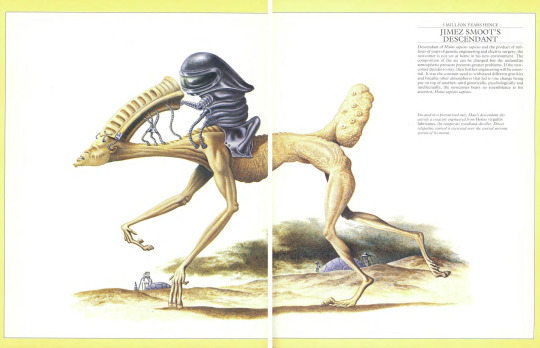


some sick little freaks from Dougal Dixon's Man After Man: An Anthropology of the Future
15 notes
·
View notes
Text
A two-for-the-price-of-one here! Tundra Dweller (bottom) and unknown attacker (top) from Man After Man
The Tundra Dweller’s body will be boiled and it’s skin fashioned into a coat.
The animal attacking it is unknown but I will assume it is a relative of the Woodland Dweller. In that case, I will decapitate it, cook its head till the brain is cooked, scalp it and begin eating its brain like Hannibal Lector.
Merry Christmas and Season’s Greasons
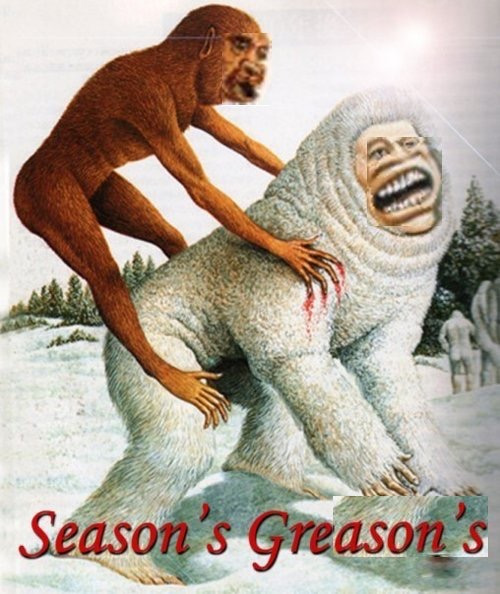
#eating animals#i want to eat mythical animals#funny meme#memes image#meme#season’s greasons#seasons greasons#dougal Dixon#man after man#speculative zoology#speculative evolution#tundra dweller#human#humanoid#human descendants#woodland dweller
8 notes
·
View notes
Text

season's greetings
43 notes
·
View notes
Text

6 notes
·
View notes
Text
It's December and you know what that means

Season's Greason's everybody
5 notes
·
View notes
Text
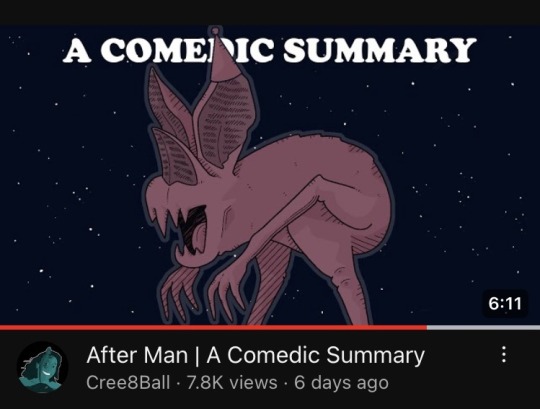
Here’s my personal recommendation of a YouTube video to check out:
youtube
#after man#dougal dixon#future evolution#speculative biology#speculative evolution#speculative zoology#speculative ecology#specevo#spec evo#specbio#spec bio#spec zoo#worldbuilding#worldbuilding project#book video#book summary#artist on youtube#youtube artist#youtube art channel#tumblr recommendations#recommend#recommendation#youtube#youtube content#youtube recommendations#youtube video#video recommendation#youtube link#video link
25 notes
·
View notes
Text
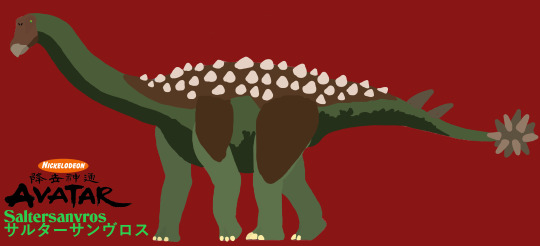
Saltersanvros
Altura: 150 metros (hasta la espalda)
Longitud: 550 metros
Peso: 135,000 toneladas
Primer Avistamiento: Patagonia [Tierra: Teratoverso]
Controles: Tierra Control [Cola de mazo y Camuflaje] Agua Control [Veneno dermico]
Guarida: Patagonia [Tierra:Teratoverso] Pantano Brumoso [Avatarverso]
Aspecto: Saltasaurus + Doedicurus (cola) + Toraton de futuro salvaje
Aliados:
Humanos: Aang, Katara, Soka, Iroh, Zuko
Kaijus y otras bestias: Anguirus, Baragon, Behemoth, Mothra, Rodan, Godzilla
Enemigos:
Humanos: Ozai y Azula
Kaijus y otras bestias: King Ghidorah
#avatar aang#avatar: the last airbender#avatarverse#kaiju#tokusatsu#toho#kaiju oc#dougal dixon#speculative evolution#the future is wild#toraton#saltasaurus#doedicurus#sega#dinosaur king
2 notes
·
View notes
Text
I just found out one of my favourite documentary series of all time, “The Future is Wild”, is available to watch for free (legally!) on the Internet Archive!
https://archive.org/details/the-future-is-wild
This is so awesome! Such a pivotal work for Speculative biology! I’m so happy to be able to share it with everyone! (and not have to dig out my DVDs to watch it again)
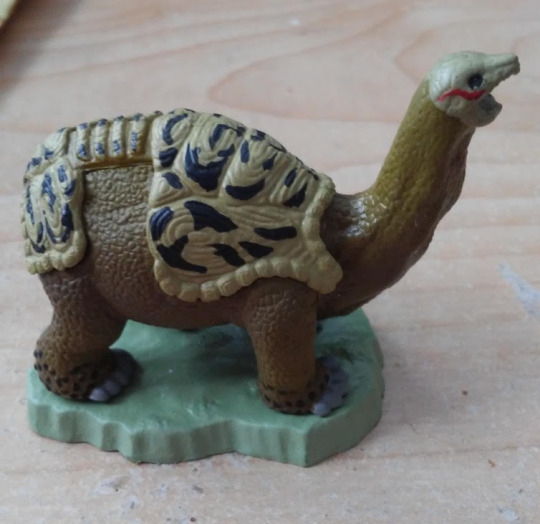
My Toraton also approves :)
32 notes
·
View notes
Text

with direct inspiration from this post (link) I made my own Valentine's edit of another work by Dougal Dixon because I feel the editability of his other illustrations should be realized
Image description: An edited piece of art of the same creatures from the "season's greason's" meme. A large Bigfoot-like creature covered in thick white fur walks on a patch of tundra grass. Almost entirely enveloped in its arms is a small person-like creature that is much skinnier with short brown fur. The brown creature's legs are tucked in between the white creature's, and it's pointing ahead and smiling. The two have been edited to be blushing and wearing flower crowns, with the brown one holding a bouquet of roses in its hand. Standing in the background are two of the same creatures, with the brown creature running towards a tulip. The image has a pink tone to it with a border of hearts and sparkles, with clip art of teddy bears in love, a candy heart saying "BE MINE," and various other hearts scattered around. The text "Happy Valentine's" in red in the middle of the image has been further edited to say "Halentine's Valentines". End ID.
#lonely dog speaks#lonely dog edits#valentine's day#dougal dixon#seasons greasons#one thing about making an edit as a joke is that it will take you multiple hours.#image described#after man#guys. i have to be honest. i'm not sure if dougal dixon did this art or if it was someone else#i'm also not sure what book this is from. sorry 🥴👍
7 notes
·
View notes
Text
ARTIST RESEARCH: DOUGAL DIXON
Dougal Dixon (born 1 March 1947) is a Scottish geologist, palaeontologist, educator and author. Dixon has written well over a hundred books on geology and palaeontology. Dixon is most famous for his 1980/90s trilogy of speculative evolution books: After Man (1981), The New Dinosaurs (1988) and Man After Man (1990). These books use imagined future and alternate animals to explain various natural processes, including evolution, natural selection, zoogeography and climate change. Through these books, Dixon is often recognised as the founder of the modern speculative evolution movement, an artistic and scientific movement focused on speculative paths in the evolution of life.



When I first started looking into the idea of mutation these illustrations that Dixon created was exactly what I visioned. I love the illustration style along with the idea and creativity of what we would look like or what creatures would look like say in 10,100,200+ years time. This concept is so interesting to me and I hope at some point to pick up a copy of this book in particular "Man after Man" for my own enjoyment.
3 notes
·
View notes